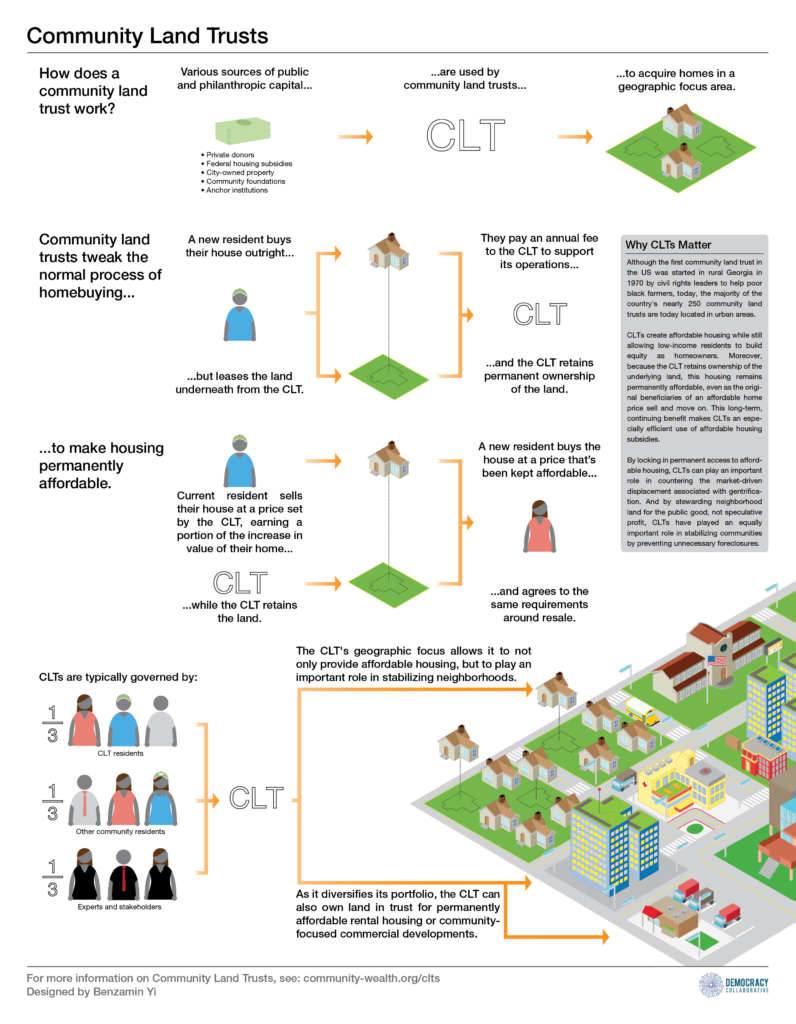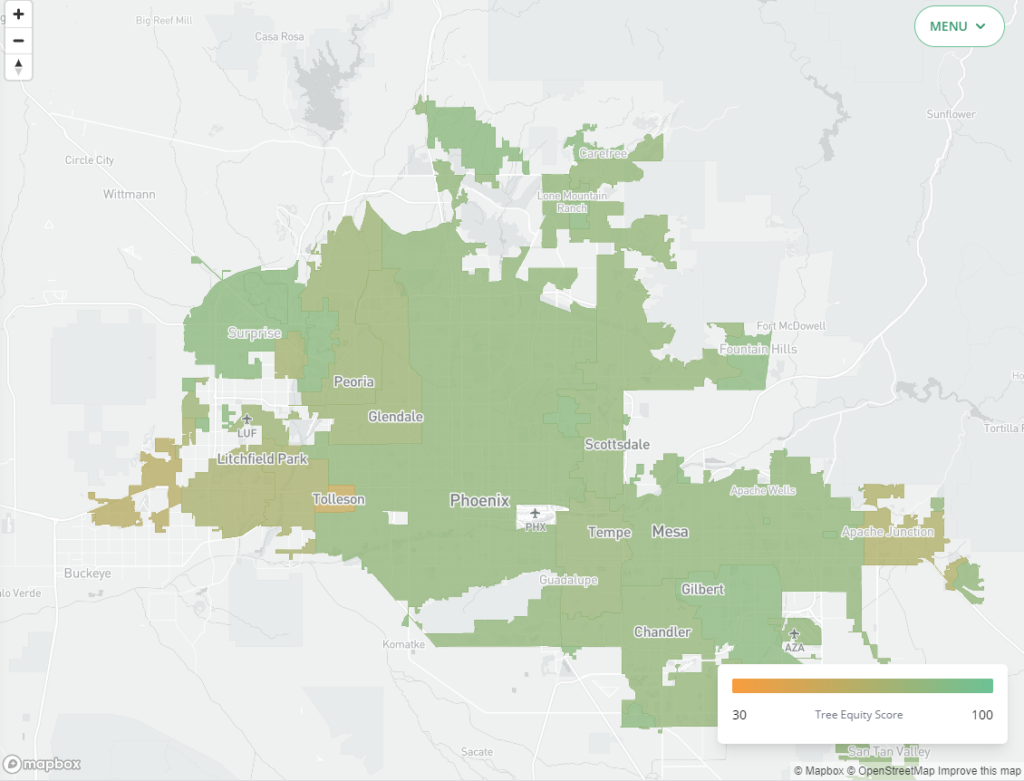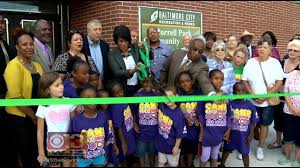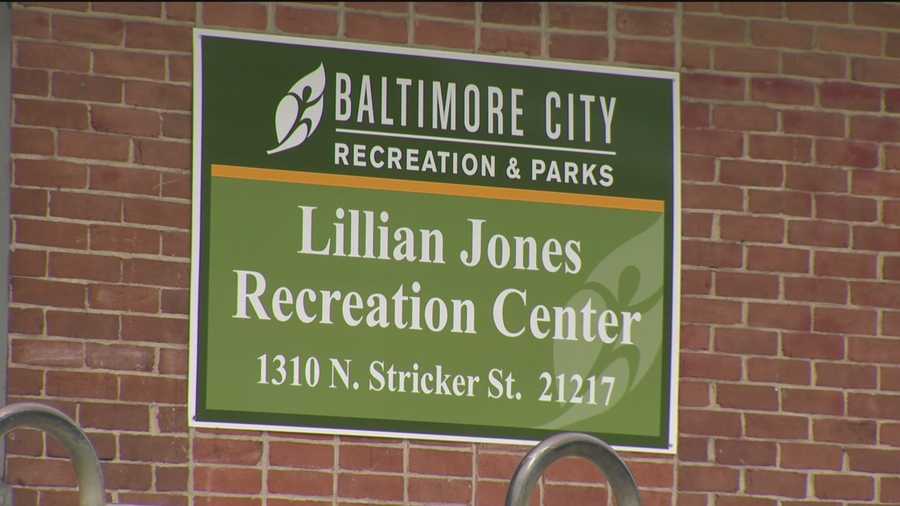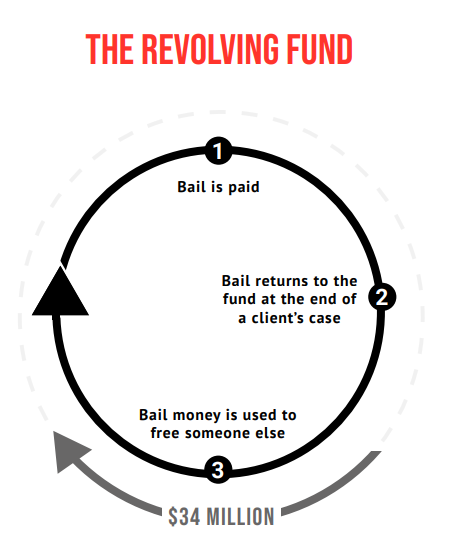In sharing these ideas, we are trying to encourage communities and organizers to think bigger and bolder about how to use ARPA funds. We do not intend to say these are the “best” ideas for your community or the most impactful options. Instead, we want to collectively brainstorm and share ideas about how to use funds in ways that do not reproduce the status quo. For other ideas from community organizers across the country, check out this fact sheet from the Community Resource Hub.
We will have one more post in this series detailing how to estimate employee costs for programs and projects you want to complete with ARPA funds. In the meantime, this tool from the Community Resource Hub that we helped create has details on how to estimate employee costs.
We previously shared 5 impactful ideas for how communities could use American Rescue Plan Act (ARPA) funds. Now we’re back with 7 more:
- Start a land bank or trust to support affordable housing, green space, or other community goods
- Invest in public broadband
- Improving the appalling public bathrooms and drinking fountain situation
- Give education stipends so low-income folks can afford to rethink their careers too
- Plant trees to reduce heat disparities
- Invest the money in a trust and use the dividends to pay for something in perpetuity
- Set up or contribute to a bail fund
We’ve even done some back of the envelope pricing for each idea, and referenced the ARPA text supporting each use. Check out the ideas below!
1. Start a land bank or land trust to support affordable housing, green space, or other community goods
Land banks and trusts convert private or underdeveloped land to uses that benefit the community and help ensure housing affordability especially in cases where residents might otherwise be priced out of the neighborhood. Land banks and trusts acquire vacant, abandoned, or tax-delinquent property, or receive grants of land purchased by the government or nonprofits. This land is then resold or held in “trust” for specific community-oriented purposes. For instance, the land trust model often involves the trust owning land and “leasing the ground” to individuals who can then own the houses/apartments on that ground for below-market rates and with restrictions on reselling to maintain affordability over time.
According to the Department of Housing and Urban Development, the first modern community land trust in the US was established out of the civil rights movement in Albany, GA, to enable African-American farmers to access, build on, and farm land. Today, the largest community land trust is the Champlain Housing Trust in Burlington, VT, which was started in 1984 when Bernie Sanders was Burlington’s mayor. Other examples can be found in Boston, Albuquerque, and 200+ other cities across the country. In contrast to land trusts (which hold the land), land banks usually resell it, after perhaps some rehabilitation, but can still accomplish some of the same goals. This brief from the TN Housing Development Agency describes differences between the land bank and trust models. Land banks have been started in Memphis, Atlanta, Genesee County (Flint), MI, and elsewhere.
ARPA money could provide excellent “seed” funds to purchase land for a bank or trust and begin the process of deciding how that land could better support community goals from affordable housing to urban gardening to parks. The Grounded Solutions Network has a lot of tools and resources to help communities get started!
How much might this cost?
The price of land varies greatly across the country. A 2015 analysis by the Bureau of Economic Analysis found that the average price per acre for developed land is $106k but that state averages range from $7k per acre of developed land in South Dakota to over $450k in NJ and CA.* One acre typically comprises 5 residential lots. The table below shows how much acquiring the necessary land might cost in different scenarios. There may be other costs, such as cleaning up the land to be used for residential purposes, but the building or renovating of houses and apartments on the land is usually financed, with those costs then passed onto or paid over time by future residents.
| Number of Lots | Acres (Lots / 5) | Price Per Acre | Total Cost |
| 300 | 60 | $50,000 | $3.0M |
| 300 | 60 | $400,000 | $24.0M |
| 600 | 120 | $250,000 | $30.0M |
Can we really do this with ARPA funds?
Disclaimer: We are not lawyers. We think the following language supports these uses. However, if you have any concerns or questions, we encourage you to send a question to Treasury asking them to clarify. We’ve seen a lot of public comments about specific uses of these funds and Treasury is keeping their FAQs updated.
P. 22-23 of the Interim Final Rule addressing disparities in public health outcomes says funding for “housing services to support healthy living environments and neighborhoods conducive to mental and physical wellness” is an eligible use. More here. If funds are deployed in a qualified census tract or other disproportionately impacted community, this could also be justified under the eligible uses of “Build stronger communities through investments in housing and neighborhoods” or “promote healthy childhood environments.” See more here.
2. Invest in public broadband
The importance of fast, reliable Internet has never been clearer than after this year of so much online schooling, remote work, and need to connect with family and friends digitally. There were far too many stories of students struggling to get reliable Internet for school, workers having to use smart phones to apply for jobs or unemployment benefits, and families struggling with kids, parents, and others competing for the Wi-Fi.
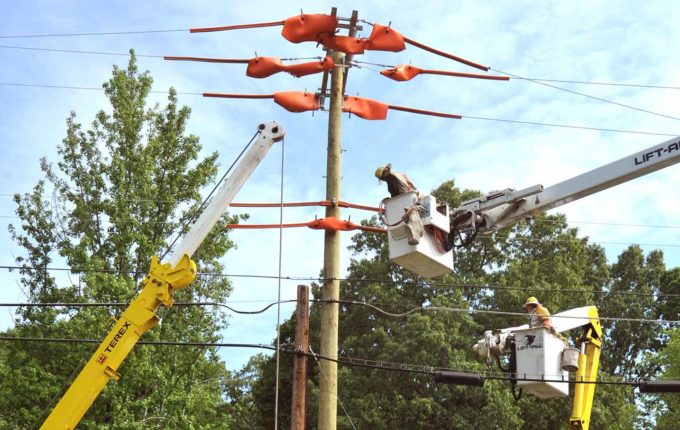
Broadband infrastructure is one of the uses of ARPA funds that Treasury specifically recommends. Treasury highlights universally accessible, high-speed, reliable, and affordable broadband coverage as critical to help recover from the pandemic and protect communities in the future. Internet hotspots that families can borrow, Internet access in libraries and community centers, and other efforts to make Internet access possible were and continue to be crucial…but they’re band-aids. Communities should think big picture about using these funds for affordable, long-term, fast broadband access. Chattanooga provides an incredible model here – here’s a teaser from a great article about it in the Prospect:
There exists a place where a government entity, bolstered by public funds, laid more than 600 miles of fiber-optic cable, connecting to every home and business in its service area. For more than a decade, this network has provided internet, voice, and video services to customers. It’s one of the fastest internet service providers in the world, with speeds up to 10 gigabits per second. It has enhanced local economic development, while offering no-cost service to families who need it most. At this point, you no doubt believe we are talking about some utopia far from our shores, in Korea or Scandinavia. But no, this place exists right here in the United States, in the heart of “red” America: Chattanooga, Tennessee.
How much might this cost?
Chattanooga’s broadband network cost $500M for the city to build over a period of 10 years. Given that Chattanooga had 167,674 residents when the project began in 2010, this works out to a cost of $298 per resident per year for 10 years — less than residents would probably pay to a private Internet provider each year. According to one study, the value realized by Chattanooga’s broadband network exceeded the costs of the project by a factor of 4.42, or over $2.20B. The project quickly became revenue positive, suggesting that ARPA funds may only be necessary to fund some of the initial construction and capital expenses and may help jumpstart future revenue through broadband fees, enticements for employers to move to or stay in the area, cost savings to the government for providing their own Internet rather than paying an external provider, etc.
| Cost Per Resident Per Year | Residents | Project Length | Total Cost |
| $300 | 170,000 | 10 years | $510M |
| $150 | 250,000 | 12 years | $450M |
| $500 | 400,000 | 7 years | $1.40B |
Can we really do this with ARPA funds?
Yes, we’ve got to admit this is not a bold idea — it’s very clearly encouraged by the legislation. See here for what ARPA has in mind with respect to broadband programs (Chattanooga appears to be a model). See here for the definition of infrastructure broadband meets. See here for the specifications of what qualifies as broadband under this program.
3. Improve the country’s appalling public bathroom and drinking fountain situation
Even before the pandemic, public access to bathrooms was a well-known issue for people experiencing homelessness, people of color, and those lacking a discretionary few dollars to spend on coffee just to use the bathroom. But, by closing more of the public restrooms, Covid-19 brought the issue of safe, clean public restrooms into even starker view.
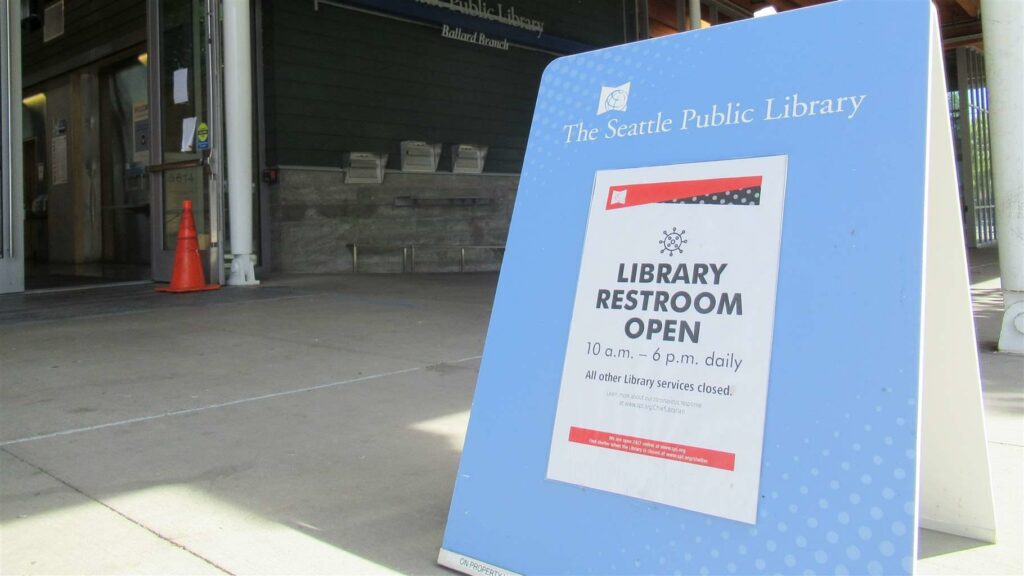
The availability and cleanliness of public drinking fountains is perhaps related, though it gets a bit less attention. The number of public water fountains appears to have declined over the past few decades, which is bad for the environment (more plastic bottles), people’s health (dehydration and more sugary drinks), and expensive.
So why not use ARPA funds to invest in public bathrooms and drinking fountains, whether that means building new ones, refurbishing old ones, or devoting funds to pay for their upkeep going forward? The maintenance and cleaning of these public resources going forward is crucial, as many of these articles make clear. Cities should consider innovative solutions so that public bathrooms and fountains do not quickly become unusable or unsafe. One option some cities have tried is contracting with community organizations to clean public facilities and monitor for overdoses or provide other services. This model can create jobs in communities of need, provide stable funding to community organizations, and improve the accessibility and infrastructure of neighborhoods.
How much might this cost?
This one depends on how many public water fountains or toilets are needed and how much constructing each costs. This 2013 analysis for the Salt Lake City Council looked across 7 public bathroom projects in 5 states and found that the average cost for a four-bathroom building was about $209k. Adjusting for inflation, that’d be about $245k today. (In case it’s useful: the analysis also provided some info about how the cost might vary for larger or smaller bathrooms and what percentage of the cost comes from the materials themselves, labor, utilities, etc.) In terms of public drinking fountains, the city of Cambridge, MA, estimated that each one costs $10k. Your community might also want to set aside ARPA funds to keep the bathrooms and drinking fountains clean and operational for a certain period of time – the estimates below are just the initial costs.
| Cost per Bathroom/Fountain | Initial Cost | |
| 5 new 4-bathroom buildings | $245k | $1.2M |
| 15 new 4-bathroom buildings | $245k | $3.7M |
| 10 new public drinking fountains | $10k | $100k |
Can we really do this with ARPA funds?
This certainly seems eligible under the eligible use of disease mitigation to respond to COVID-19: “adaptations to public buildings to improve communicable disease mitigation, such as ventilation systems, heating and cooling upgrades, filtration systems.” These investments also may be eligible under the provision for building stronger communities through investments in housing and neighborhoods or promoting healthy childhood environments. And see Section 2.18 of the Treasury FAQ about improvements in parks. ARPA funds are eligible to distribute to non-profits and businesses (see here). Another idea could be to compensate them for providing public restroom access or drinking water.
4. In a time of rethinking jobs, give education stipends so low-income folks can afford to rethink their careers too
There has been a ton of media attention paid to the record number of people quitting their jobs this spring and summer. Some have left for higher wages, some to pursue a new career (see Civilytics’ newest employee for example 😊), and for many other reasons as well. Biden’s American Families Plan includes two years of free community college, which could make a real difference for many students. However, students, advocates, and researchers have long recognized that it’s not necessarily tuition costs that impede low-income students’ completion – it’s all the other costs of students’ lives: transportation, food, housing, childcare.

Juggling work and other responsibilities with classes can force students to take fewer classes at a time, potentially drop or fail a course, prolong time to degree, and ultimately lead some students to “stop out” or dropout. But, if students have the breathing room that sufficient funds can provide, they may be able to persist in their education and earn a degree that leads to a better job. Santa Fe recently announced a pilot program to provide $400 monthly stipends to community college students with children. Why not use ARPA funds to provide stipends to returning community college students – investing in their future and the longer-term future of the community?
How much might this cost?
This one depends on how many people are eligible and interested and how large a stipend your community wants to offer.
According to the Community College Research Center, nearly 10 million students enrolled in community colleges sometime during the 2017-18 school year. That’s about 1 in 33 people. About two-thirds of community college students have family incomes less than $50k. Say your community wanted to give a stipend to everyone who enrolled in community college and had a family income below $50k. Then say, based on the stats above, that 1 in every 50 people in your community are eligible and you provide a stipend of either $500 or $1,000 per month.
| Total Population | Estimated Eligible Community College Population | Stipend per Student per Month | Total Cost |
| 50,000 | 1,000 | $500 | $6M |
| 50,000 | 1,000 | $1,000 | $12M |
| 250,000 | 5,000 | $500 | $30M |
Can we really do this with ARPA funds?
Disclaimer: We are not lawyers. We think the following language supports these uses. However, if you have any concerns or questions, we encourage you to send a question to Treasury asking them to clarify.
For people in qualified Census tracts or other disproportionally impacted communities, addressing educational disparities is an eligible use and the disparities of public health outcomes provision would also seem to allow this. Job training is eligible under the negative economic impacts eligible uses and supports to enable job training would seem to fall under that use as well. Cash assistance is also explicitly eligible.
5. Plant trees to reduce heat disparities in metropolitan areas across the country
Concrete and asphalt radiate heat significantly more than green spaces, and lower-income neighborhoods in urban areas have significantly fewer trees and green spaces than their wealthier counterparts. As temperatures rise due to climate change, the effect of this disparity is becoming more and more pronounced.
American Forests, a conservation group, found that neighborhoods with a majority of people of color have 33% less tree canopy on average than majority-white communities. Chris David, from American Forests, said in a Boston Globe article: “What we know is that trees make cities more climate-resilient, improve health outcomes, and that they haven’t been equitably distributed. They should be considered as important as any infrastructure, and the federal government should be helping cities pay for them.”
Consider using ARPA funds to plant trees and – if needed buy a truck to water them and endow a government position responsible for doing so. After all, we don’t want to plant them and have them die next year! Phoenix has pledged to reach “tree equity” by 2030. Use ARPA funds to get your city onboard with this pledge too! Then learn from Detroit’s experience to make sure a diverse set of community organizers and members is involved in the initiative so residents have a say about whether and how trees are planted in their neighborhood.
How much might this cost?
Boston, MA has 160,000 trees managed by the city at a cost of $1.7M annually. Using this as an example we can estimate the cost per tree at $10.63 annually. Boston has an area of 89.63 square miles, so about 1,785 trees per square mile.
For this estimate, we can take the number of trees per square mile we would like to have and multiply it by the square mileage of our city to get the total number of trees. We can then multiply the total number of trees by the cost per tree to calculate the ongoing maintenance costs for a fully-funded tree management program.
| City Area (in Square Miles) | Trees per Square Mile | Number of Trees to Manage Total | Cost per Tree | Total Cost |
| 89.63 | 1,785 | 160,000 | $10.63 | $1.7M |
| 89.63 | 3,000 | 268,890 | $10.63 | $2.8M |
| 40.0 | 4,000 | 160,000 | $15.00 | $2.4M |
Can we really do this with ARPA funds?
Disclaimer: We are not lawyers. We think the following language supports these uses. However, if you have any concerns or questions, we encourage you to send a question to Treasury asking them to clarify.
These investments are likely eligible under the provision for building stronger communities through investments in housing and neighborhoods or promoting healthy childhood environment. And see Section 2.18 of the Treasury FAQs about improvements in parks.
6. Invest the money in a trust and use the dividends to pay for something your community needs in perpetuity
Let’s say Baltimore invested all of its ARPA funds – $526M – into a trust. How much could that generate each year? Probably at least $21M, possibly as high as $53M, with perhaps $32M being a “safe bet.” These numbers come from assuming a conservative 4% rate of investment (=$21M), the 10% average from the stock market (=$53M), and a middle 6% rate often recommended by investment groups for making predictions.†
So what could Baltimore get for the “middle” number, $32M? Probably about 320 social workers a year forever. Or Baltimore could more than double the amount spent on temporary housing for the homeless every year ($21M for FY22) and have enough left over to increase the amount spent on community recreation centers by 60% ($19M in FY22). Basically the city could get a lot…forever…if it made sense to invest the money and only spend the returns each year, rather than spending it all in the next 2-5 years.
We don’t know if that makes sense for Baltimore – or your community. Maybe you need the money now. Maybe you need some of it now and could invest some in a trust to ensure the continued funding of important resources every year forever. That should be up to you and your community members to decide. However, it could be worth considering examples of how governments have invested proceeds into funds that continue to pay off for future generations. One example is the Montana coal trust fund, started in 1975 and which pays for renewable energy development, local infrastructure, regional water systems, and part of the state’s general fund. Do you have others? If so, send them our way! We’d love to add more examples here.
How much might this cost?
This one doesn’t have a specific cost – your community’s annual return on the investment would just depend on how much was invested (and the rate of return). See below for example.
| Principal Investment | Low Return | High Return | Annual Income Range |
| $500M | 4% | 10% | $20 – $50M |
| $100M | 4% | 8% | $4M – $8M |
| $50M | 5% | 12% | $2.5M – $6M |
Can we really do this with ARPA funds?
Disclaimer: We are not lawyers. We think the following language supports these uses. However, if you have any concerns or questions, we encourage you to send a question to Treasury asking them to clarify.
On p. 103 of the Interim Final Rule, Treasury appears to foresee longer-term investments with ARPA funds:
For these reasons, Treasury believes it will be appropriate for a majority of recipients to adapt their plans as the recovery evolves. For example, a faster-than-expected economic recovery in 2021 could lead a recipient to dedicate more Fiscal Recovery Funds to longer-term investments starting in 2022. In contrast, a slower-than-expected economic recovery in 2021 could lead a recipient to use additional funds for near-term stimulus in 2022.
Similarly, section 10.1 of the SLFRP FAQ answers the question:
May governments retain assets purchased with Fiscal Recovery Funds? If so, what rules apply to the proceeds of disposition or sale of such assets? Yes, if the purchase of the asset was consistent with the limitations on the eligible use of funds. If such assets are disposed of prior to December 31, 2024, the proceeds would be subject to the restrictions on the eligible use of payments.
7. Set up or contribute to a bail fund in your community
The National Partnership for Pretrial Justice estimates that almost half a million people are held in jail pre-trial every day, often because they can’t afford bail. Cash bail essentially turns the presumption of innocent until found guilty on its head since many low-income and even middle-income people cannot afford bail (exceptions are DC, NJ, and NM, where money bail is rarely imposed). Reforming cash bail and the broader criminal “justice” system has to be the longer-term solution, but – in the meantime – bail funds can help mitigate a lot of negative impacts on lower-income defendants and their families while also reducing the amount that communities spend incarcerating people.
Over 70 percent of people in local jails are held pretrial, meaning they haven’t been convicted of a crime. Cash bail creates a strong incentive to plead guilty, especially for defendants who have children or jobs at risk. Under the cash bail system, most defendants have to pay a commercial bail bondsman a nonrefundable 10% fee to post bail – money they can never get back. And it costs the community from $50 to $500+ per person per day to incarcerate people who would otherwise be released pretrial if they only had money available for bail. Overall, the U.S. spend about $14B a year incarcerating people who haven’t been convicted of any crime.
So, again, we need to end mass incarceration now…but, at the same time, bail funds can make a tremendous difference to individuals, their families, and communities.‡ The Bail Project and National Bail Fund Network have a ton of great resources on this topic.
How much might this cost?
Honestly, it probably would cost less than your community is spending to incarcerate people pretrial. If you just reallocated the money spent per day to incarcerate people, you could probably create a bail fund.It’s very important to understand that, at the end of the case, when a person has made all their court appearances, the bail is repaid, allowing the money to be used again and again.
More generally, it depends how many people are held in pre-trial detention in your community and how much their average bail is. For this estimate, let’s use some numbers from Durham, NC, where in 2016, 1,700 people were held pretrial on cash bails of less than $5k. That’s roughly 1 in 125 Durham residents at that time. Most sources seem to indicate that about 90% of people bailed out show up for their court dates (so their bail is returned). We’ll use that percentage to determine how much of the funds would be funneled back into the bail fund. You’d probably also need a certain overhead cost – maybe just one staff member’s salary, benefits, and supplies to start – which would not be “returned.”
| Community Population | Estimated Pretrial Population | Median Bail of People Bailed Out | Initial Cost + $100k for Overhead | “Unreturned” Funds |
| 50,000 | 400 | $2000 | $900k | $180k |
| 50,000 | 400 | $5000 | $1.8M | $360k |
| 250,000 | 2,000 | $2000 | $4.1M | $500k |
Can we really do this with ARPA funds?
Disclaimer: We are not lawyers. We think the following language supports these uses. However, if you have any concerns or questions, we encourage you to send a question to Treasury asking them to clarify.
On p. 41 of the Interim Final Rule, the U.S. Treasury recognizes the need to use funds to build stronger communities:
[The funds]… provide resources to not only respond to the immediate harms of the pandemic but also to mitigate its longer-term impact in compounding the systemic public health and economic challenges of disproportionately impacted populations. Treasury encourages recipients to consider funding uses that foster a strong, inclusive, and equitable recovery, especially uses with long-term benefits for health and economic outcomes.
Keeping people out of jail who have not been convicted of a crime but are simply unable to afford a “modest” bail amount is an important step toward building stronger more resilient communities.
- *Of course, in expensive urban areas, the price per acre can easily be more than $1 million. As shown in the example table, the cost of starting a community land trust really depends on how expensive it is to acquire the necessary land.
- †These investment strategies are sometimes called Local Government Investment Pools and you can read more about them in this explainer from the Government Finance Officers Association (GFOA): https://www.gfoa.org/materials/local-government-investment-pools
- ‡The Bail Project has a tremendous amount of resources for communities interested in learning more, including information on their campaign to Bail Out the South, a history of cash bail, a roadmap for reimagining pretrial justice, and information about important pretrial supports, like court reminders, transportation assistance, and voluntary referrals to community services to help ensure individuals attend their court date and get any assistance needed. You can learn more about other bail funds by state on the National Bail Fund Network’s site.


